Are you dreaming of becoming a fashion designer but don’t know where to start? Whether you want to create your own clothing line or work for a top fashion brand, this beginner’s guide will tell you everything you need to know to get started. From understanding the basics of fashion design to learning essential skills like sketching, sewing, and fabric selection, we’ll cover all the key steps to help you develop your own unique style. Moreover, you’ll know how to build industry connections, gain experience, and turn your passion into a career. It doesn’t matter where you are on your journey, this guide will give you the confidence and knowledge to take your first steps into the exciting world of fashion design.
1- Understanding Fashion Design
Have you ever wondered how the clothes you wear come into existence? Fashion design is more than just producing clothes, it’s a form of self-expression that shapes how we present ourselves to the world. In this section we will review what fashion design is all about, its history, the important elements that shape it, various categories of fashion designs and the responsibilities of a fashion designer in bringing their ideas to life.
What is Fashion Design?
Fashion design is the process of turning simple creative ideas into clothing and accessories that reflect different personal styles and cultural trends. Designers turn their ideas into styles by choosing fabrics, colors, and shapes. Fashion isn’t only about trends but it is also about telling stories which reflect society where it is being presented. For example, designers like Virgil Abloh redefined luxury fashion by blending streetwear elements into high-end designs, while Simone Rocha uses romantic fabrics like lace and tulle to tell deeply personal stories through her pieces. Fashion design isn’t just about trends but it’s also about finding your voice and sharing it visually. Whether you’re into minimalist styles or bold, experimental looks, fashion design gives you a platform to bring your ideas to life.
The History and Evolution of Fashion
Fashion design has always evolved with culture, technology, and society.During the Victorian era (1837-1901), fashion was all about elegance, modesty and social status as garments with intricate details, such as Silhouettes and full skirts, were in fashion at that time. Then in the 90s, fashion was transformed into the bold bike shorts, slip dresses, flannel shirts, cargo pants. Then there was the rise of ready-to-wear fashion that made stylish clothing more accessible. Today, fashion is a mix of past inspirations and future innovations, proving that style is always changing. This evolution is what keeps fashion exciting, allowing people to express themselves in new and creative ways.
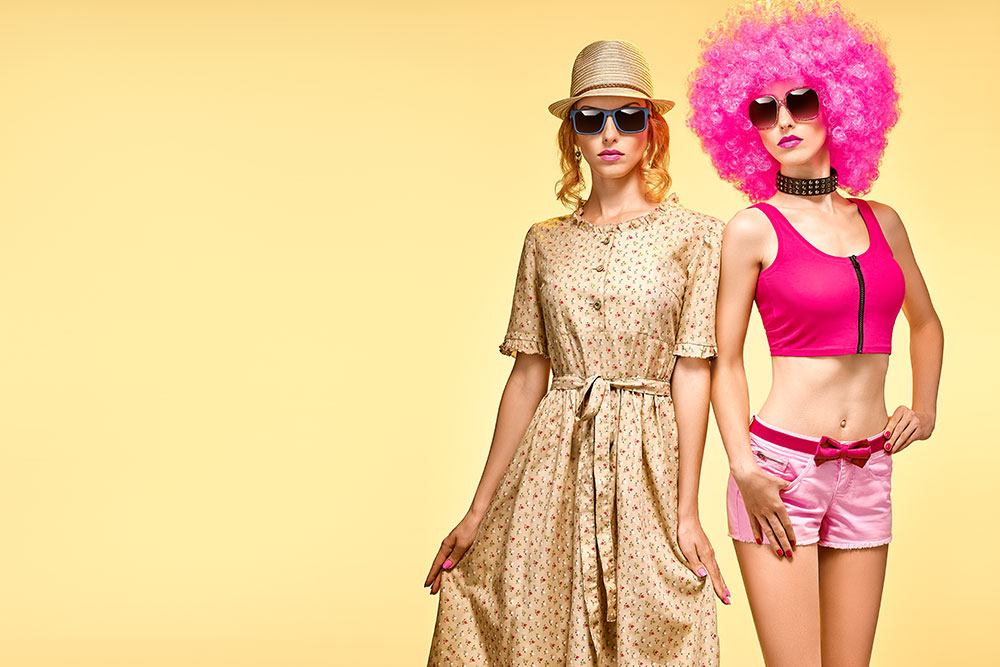
Key Elements of Fashion Design (Silhouettes, Textures, Colors, Patterns)
Fashion design is kind of like telling a story without words—and the key elements are what help you speak that visual language. There are four key elements: silhouettes, textures, colors, and patterns which are the basics that shape every outfit we see. Silhouettes decide the overall shape and vibe of a garment, while textures add depth and feeling. Colors set the mood, and patterns bring in personality and movement. Learning how to balance and combine these elements is honestly where the magic starts. Once you get used to them, you can start creating looks that really say something, whether it’s bold, playful, classic, or totally out there.
Silhouettes
Silhouettes are the foundation of any garment, determining its overall shape and how it fits the body. Whether a design is meant to flow freely or fit tightly to the contours of the body, the silhouette shapes the entire aesthetic of the piece. Different silhouettes can convey different moods and styles, making them essential tools for fashion designers. For example, a sleek, tailored silhouette like a pencil skirt or suit jacket speaks to sophistication and structure, while a more relaxed, loose silhouette, such as an A-line dress or oversized blazer, can convey comfort and casual elegance. Silhouettes can also be a powerful form of self-expression, as they define how a person presents themselves, allowing designers to create clothes that speak to a range of personalities and occasions.
Textures
Textures are what give a garment its sensory identity, adding layers of visual and tactile depth that make designs come alive. The texture of a fabric can completely transform the feel of an outfit; silk gives off a luxurious sheen, while wool offers warmth and structure, and velvet invites tactile curiosity with its soft, rich feel. The use of texture also adds complexity and intrigue to designs, with rougher fabrics like denim or linen offering a more casual, rugged vibe, and smoother materials such as satin or chiffon suggesting elegance and fluidity. Combining different textures can create striking contrasts and highlight particular elements of a design, such as pairing a textured leather jacket with a soft knit sweater for added depth and interest. Texture allows designers to convey emotions and elevate an outfit from basic to extraordinary.
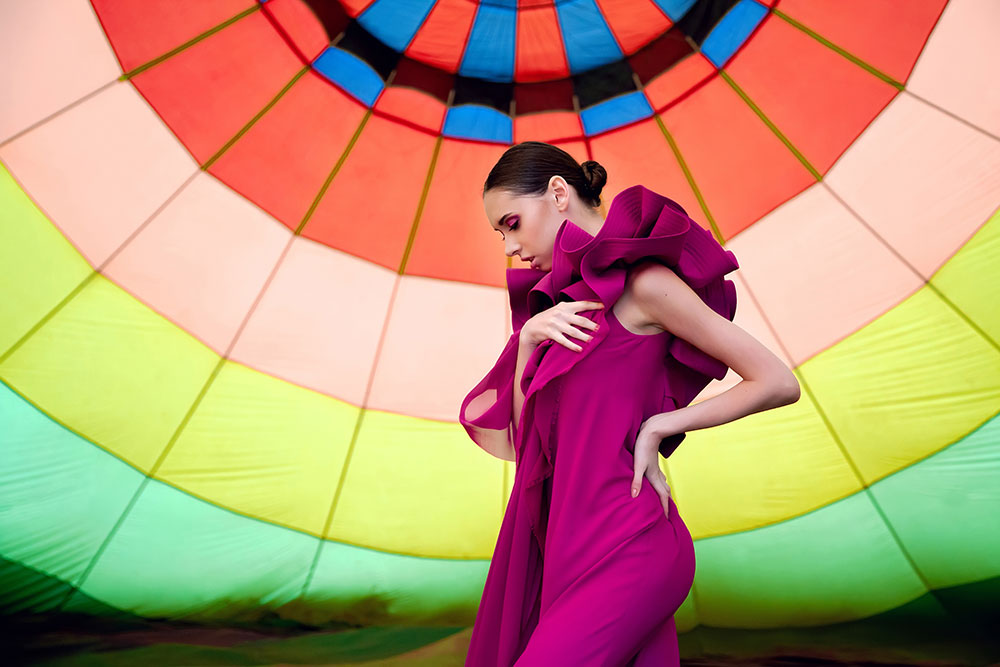
Colors
Colors are fundamental in setting the tone and personality of a design. They evoke emotions, influence perceptions, and can define entire fashion movements. Bright colors, like red or yellow, can create bold, energetic statements, making the wearer stand out in any crowd, while neutral tones such as beige, white, or grey offer a timeless, classic aesthetic that feels polished and sophisticated. In places like London, black is a perennial favorite, admired for its versatility and chicness. Black clothing is often associated with elegance, edginess, and a sense of mystery, making it a go-to choice for both day-to-day wear and formal occasions. Color choices are not only about aesthetics; they can also reflect cultural trends, the season, and personal identity, creating an emotional connection between the wearer and the piece.
Patterns
Patterns add an extra layer of creativity to fashion design, transforming simple fabrics into visual storytelling. From the bold geometric lines of stripes to the playful and romantic florals, patterns bring uniqueness and personality to a garment. Each pattern tells a different story, from the sophistication of pinstripes in a professional setting to the carefree vibe of polka dots on a summer dress. In London fashion, the plaid pattern, with its rich history and varied iterations, continues to be a favorite for its timeless appeal and versatility. Patterns allow designers to experiment with visual contrasts, balance, and proportions, offering endless possibilities for creating pieces that stand out while still reflecting a distinct point of view. Whether subtle or bold, patterns are essential in giving garments their character and visual impact.
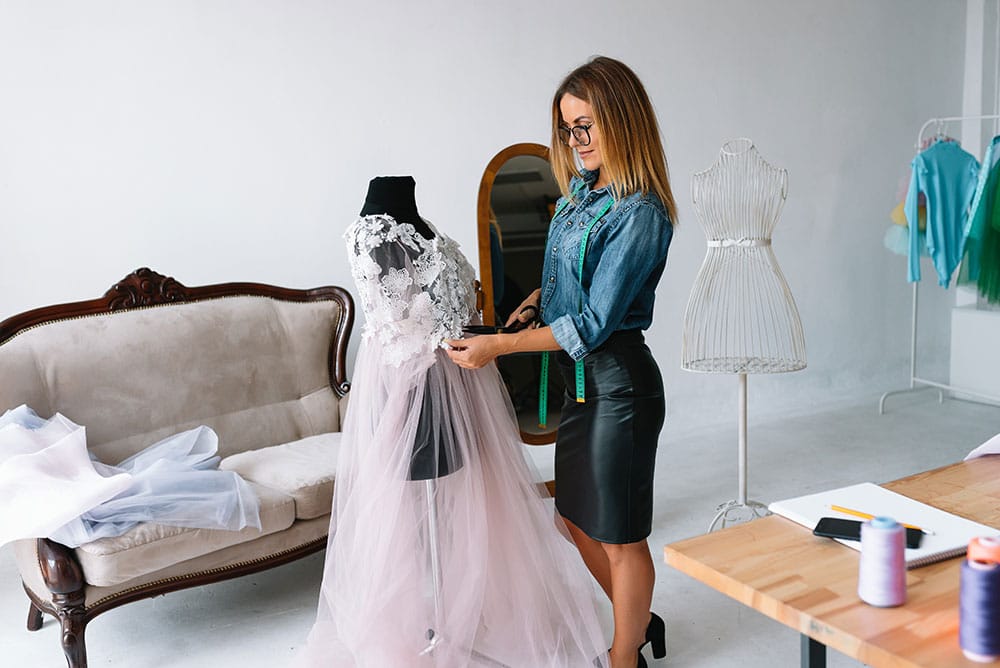
Different Types of Fashion Design (Haute Couture, Ready-to-Wear, Mass Market, Sustainable Fashion)
Once you understand the key elements of fashion design like silhouettes, textures, colors, and patterns; you start to notice how designers use them differently depending on the kind of fashion they’re creating. These elements aren’t just random choices but they’re tools that help tell a story, create a vibe, and connect with a specific audience.
Not all clothing is made with the same purpose or for the same people. Some designs are meant to wow on a runway, while others are made to be worn every day. That’s where the different types of fashion design come in. Each category; whether it’s haute couture, ready-to-wear, mass market, or sustainable fashion, has its own goals, processes, and creative approach. Understanding the differences not only helps you appreciate the art behind the clothes but also helps you figure out where your own style and design interests might fit best.
Haute Couture
Haute Couture is the epitome of luxury fashion, representing the highest level of craftsmanship and exclusivity. These one-of-a-kind, handcrafted garments are made to measure for individual clients, ensuring a perfect fit and unique design. The process involves hundreds of hours of meticulous work, often incorporating the finest fabrics and intricate detailing that can’t be found in mass production. Haute couture pieces are often seen gracing the red carpet or worn by royalty, symbolizing not only opulence but also art and craftsmanship at its finest. Fashion houses like Chanel, Dior, and Valentino showcase their haute couture collections during Paris Fashion Week, setting global trends and inspiring the fashion world with their visionary creations. These garments are the epitome of style and elegance, reserved for a select few who can afford their luxurious price tags.
Ready-to-Wear
Ready-to-Wear fashion strikes a balance between the exclusivity of haute couture and the practicality of mass-market clothing. Ready-to-wear collections are designed for easy purchase and are typically made in standard sizes, offering stylish, high-quality garments that are more accessible to the general public. Unlike haute couture, which is individually tailored, ready-to-wear pieces are mass-produced but still maintain a high standard of craftsmanship and design. These collections are usually released seasonally by top designers and sold through boutiques and department stores. Ready-to-wear offers consumers the opportunity to own pieces that reflect the latest fashion trends while maintaining an accessible price point. It’s the perfect option for fashion-forward individuals who want stylish and well-made clothing without the high cost and exclusivity of couture.
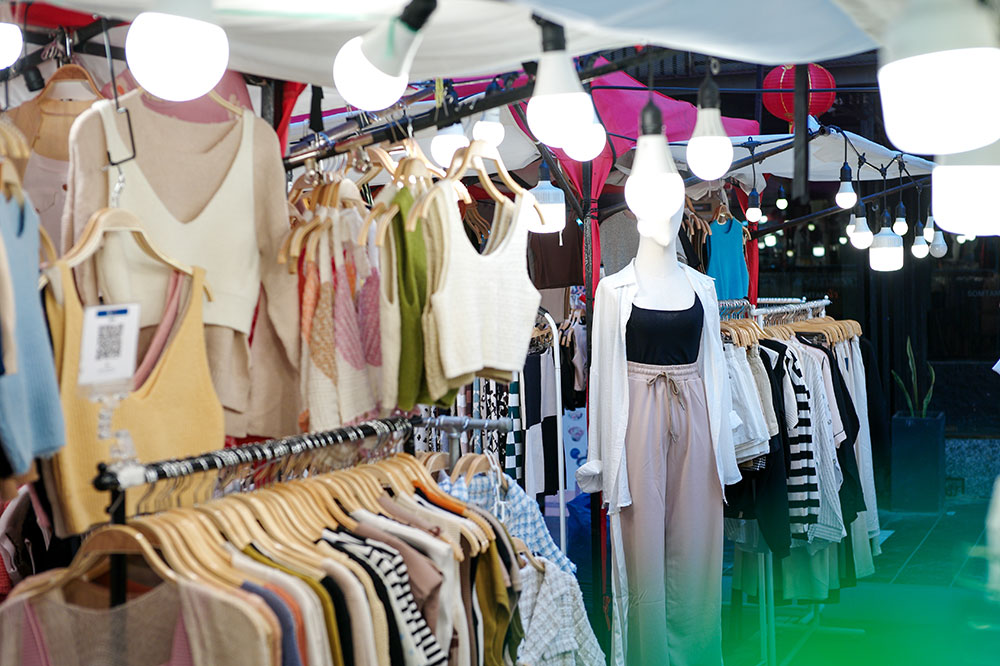
Mass Market
The third type of fashion design is mass market. Mass Market fashion is all about accessibility and affordability. This type of clothing is produced in large quantities and made available to the public at a lower price point. Mass-market designs focus on practicality and the ability to quickly adapt to current trends, ensuring that a wide range of customers can access fashionable pieces. Fast fashion retailers like Primark and H&M epitomize mass-market fashion by offering a variety of trendy, budget-friendly options for every occasion. These designs are often inspired by high-fashion trends but are produced quickly and in vast quantities to meet the demand. While mass-market clothing is not known for its longevity or craftsmanship, it plays a significant role in making fashion accessible to a wide audience, allowing consumers to keep up with trends without breaking the bank.
Sustainable Fashion
The last type of fashion design is sustainable fashion which represents a conscious shift towards more eco-friendly and ethical practices in the fashion industry. This movement focuses on creating garments that are kind to the planet by using sustainable materials like organic cotton, recycled fabrics, and plant-based dyes, while minimizing waste and reducing pollution. Sustainable fashion challenges the traditional “fast fashion” model by encouraging consumers to buy fewer, but more durable and timeless pieces. Brands committed to sustainability emphasize transparency in their production processes, often supporting fair labor practices and promoting environmental responsibility. The goal is to create clothing that not only looks good but also has a positive impact on the world. This growing trend in the fashion industry is helping consumers make more mindful choices, proving that fashion can be both stylish and eco-conscious.
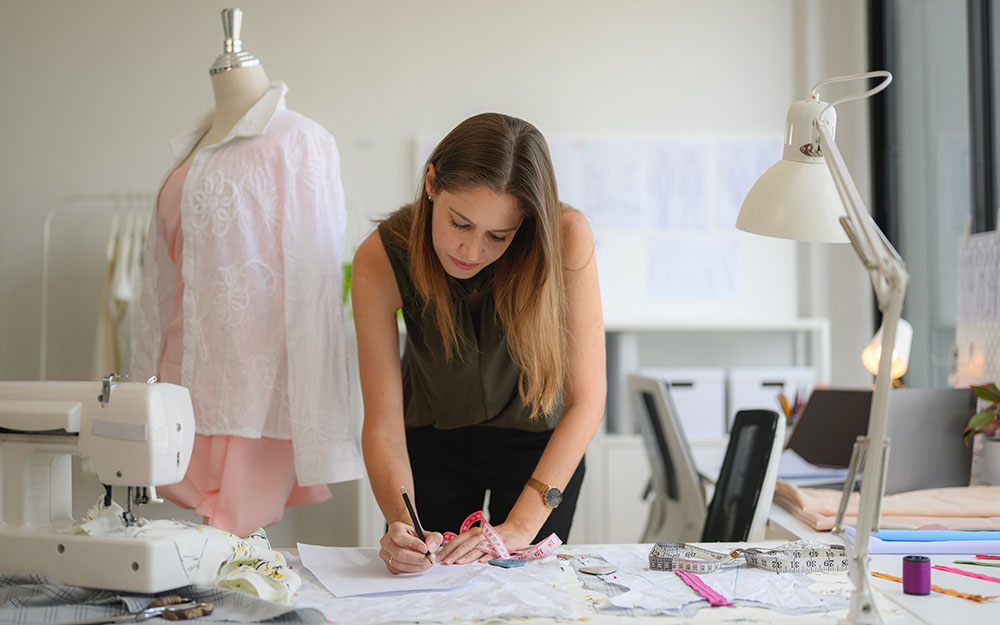
The Role of a Fashion Designer
A fashion designer is at the heart of the fashion industry, combining creativity, technical skill, and an understanding of market trends to create garments that resonate with consumers. Their role begins with extensive research into current and upcoming fashion movements, identifying themes and styles that will influence their designs. From there, designers carefully select fabrics, colors, and textures that align with their vision, considering not only the aesthetic appeal but also the functionality and sustainability of their choices. They sketch out ideas, often making multiple revisions to ensure their concept comes to life as envisioned. Once the designs are finalized, the designer works closely with tailors, pattern makers, and manufacturers to bring their creations to life, overseeing every step of production to maintain quality and attention to detail.
In addition to their creative responsibilities, fashion designers are also increasingly tasked with addressing environmental concerns in the industry. Many modern designers prioritize sustainability, opting for eco-friendly materials, reducing waste, and promoting ethical production practices. This focus on sustainable fashion reflects a growing awareness of the environmental impact of the fashion industry, with designers using their platforms to champion eco-conscious choices. As the fashion industry evolves, designers play a crucial role in shaping its future by balancing innovation with responsibility, creating collections that are both trend-forward and aligned with the values of conscious consumers.
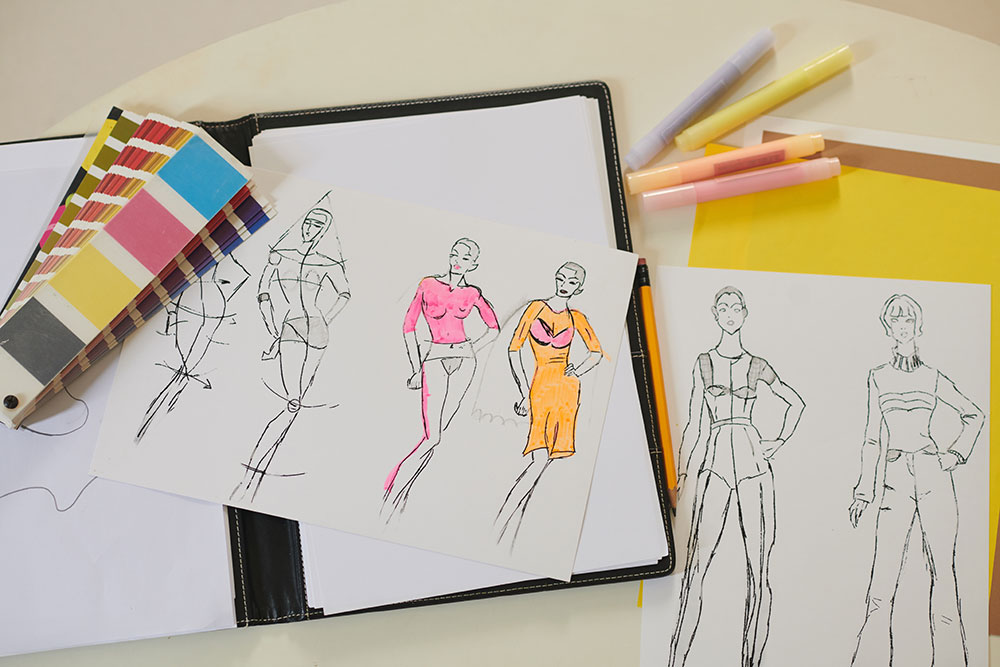
2- Developing Your Creative Vision
In this section, you’ll focus on developing your creative vision as a fashion designer. We’ll start by exploring how to find your unique style and aesthetic, helping you define what makes your designs stand out and resonate with your target audience. Understanding fashion trends and historical influences is essential for gaining a broader perspective on design, and we’ll guide you on how to incorporate both contemporary trends and timeless elements into your work.
We’ll also dive into the importance of understanding cultural and societal impacts on fashion, showing how you can draw inspiration from diverse cultures and social movements to create designs that are both meaningful and relevant. Next, we’ll discuss creating a mood board for inspiration, a powerful tool for visually organizing your ideas, themes, and color palettes. Finally, you’ll learn about sketching and illustrating design ideas, bringing your vision to life through detailed drawings that communicate your concepts clearly. This section will equip you with the foundational skills to begin translating your creative ideas into stunning fashion designs.
Finding Your Unique Style and Aesthetic
It is not a piece of cake to be a designer. A designer is someone who has a unique style and aesthetic and it is crucial to find your own unique style and aesthetic which can be done by going through different fashion eras, cultural influences, and personal preferences to create a signature look. You should pay attention to the colors, silhouettes, and textures that resonate with you, and experiment with different styles to refine your fashion identity. Fashion is all about embracing your individuality which will help you stand out and express yourself through fashion.
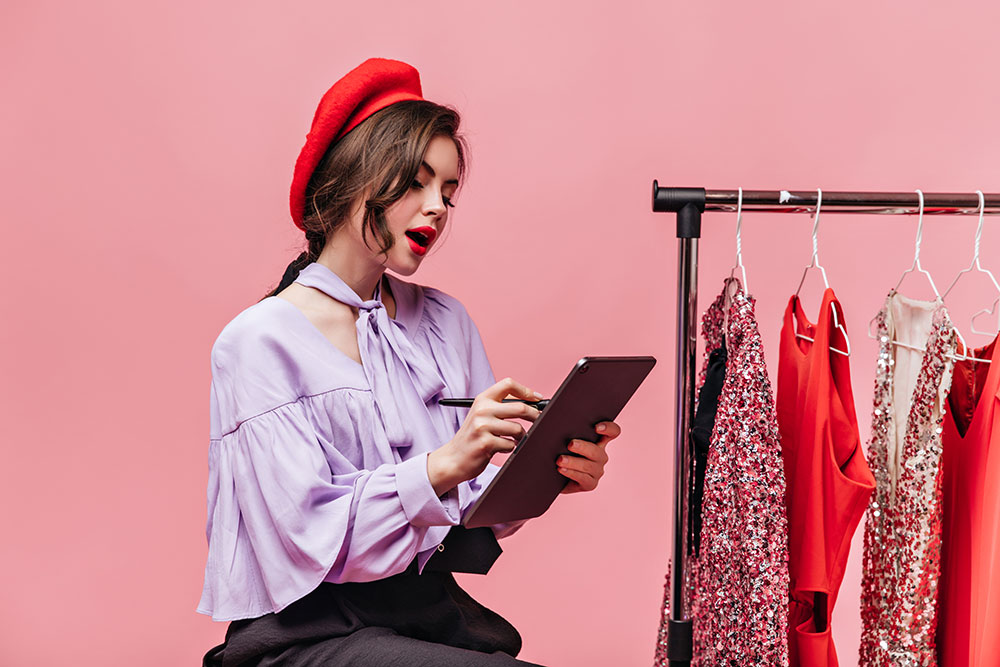
Researching Fashion Trends and Historical Influences
It is crucial to understand the fashion trends and historical influences as it will help designers to create styles that feel fresh yet timeless. By studying past fashion movements, from Victorian elegance to the 90s streetwear, designers can be inspired and could also add a modern twist to the old fashion designs and styles. It is really important to be up to date with the current trends which could be possible by attending runaway shows, reading fashion magazines, and checking up on social media to know what’s popular at the moment. When the designers blend historical elements with contemporary fashion, it makes their designs unique and innovative that connect with both tradition and modern tastes.
Understanding Cultural and Societal Impacts on Fashion
As aforementioned, fashion is not only about clothing but it is also about the values, traditions, and revolution in society. Different cultures have different clothing styles. For instance, in Germany people prefer minimalistic and functional fashion whereas in London edgy streetwear is loved. Furthermore, the social movements, technology, and global events change the trends, such as the rise of sustainable clothing. By understanding these influences and changes, designers can create pieces that resonate with people, tell meaningful stories, and stay relevant in an ever-changing world.
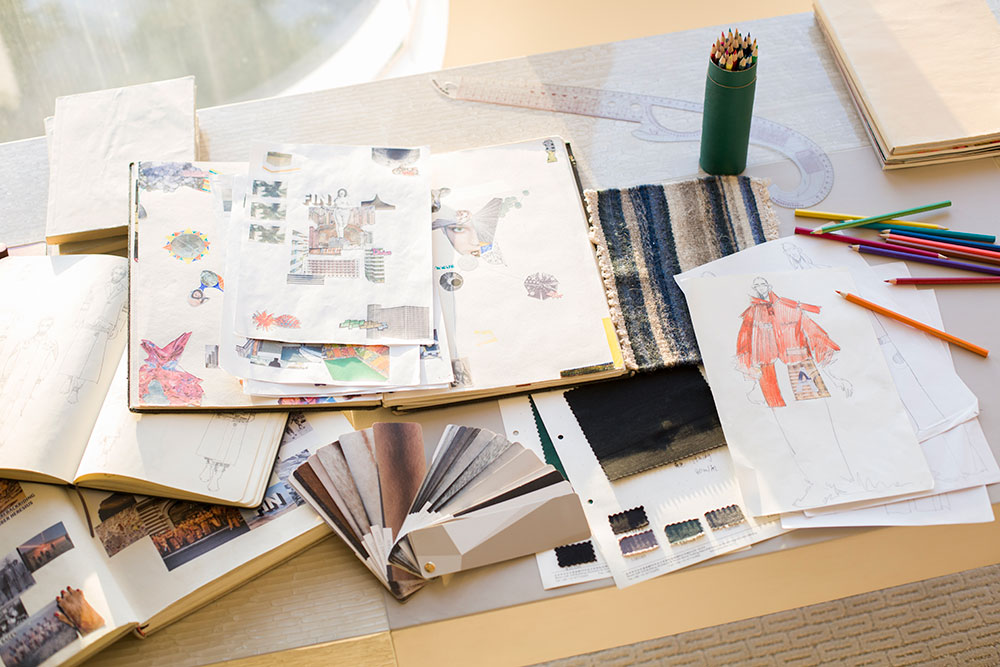
Creating a Mood Board for Inspiration
After exploring how culture and society influences fashion, designers convert these influences into visual concepts through mood boards. A mood board is a designer’s creative blueprint which captures the essence of a collection in a visually compelling way. It includes a mix of textures, fabric swatches, trims, and color palettes to define the overall mood. Design elements, lifestyle images, and styling details help shape the inspiration, while words, phrases, and graphics reinforce the theme. By combining these elements, designers can clearly visualize their concept and maintain a strong, cohesive direction. Mood boards serve as a powerful guide which ensures that every detail aligns with the intended aesthetic.
Sketching and Illustrating Design Ideas
Once a designer gathers inspiration from the mood board, it’s time to bring ideas to life through sketching. These drawings help visualize everything from silhouettes and fabric movement to intricate details. Sketching acts as a guide to design the entire process whether it is done by hand or using digital tools, sketches act as blueprints. Notes on fabric choices, colors, and textures make the vision clearer which make sure that the final piece is exactly how it was initially thought to be. To summarize, this step is where creativity truly takes place and where the abstract ideas are turned into fashion-ready designs.
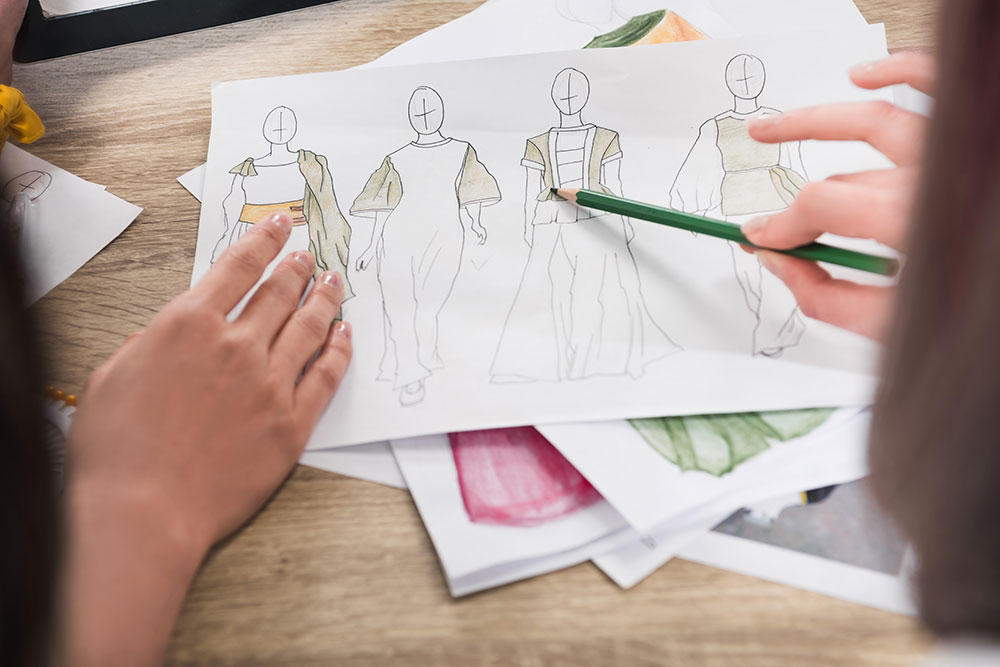
3- Learning the Fundamentals of Fashion Design
In this section, we’ll cover the core fundamentals of fashion design, starting with an introduction to fabrics and textiles. You’ll learn how different materials influence the design process, from choosing the right fabric for a garment to understanding its texture, drape, and durability. We’ll also dive into garment construction and sewing basics, equipping you with the essential skills to bring your designs to life through sewing techniques and an understanding of how garments are put together.
Pattern making and draping techniques are key skills for any fashion designer, and we’ll walk you through the process of turning your sketches into wearable pieces. You’ll also explore color theory and how it plays a crucial role in creating harmonious and visually appealing designs, as well as how to effectively manipulate fabrics and add surface designs for a unique touch. Finally, we’ll emphasize the importance of fit and proportion in clothing, teaching you how to ensure your garments are not only aesthetically pleasing but also comfortable and well-fitting for your clients. This section will provide the essential knowledge needed to create professional, high-quality fashion designs.
Introduction to Fabrics and Textiles
Fabrics are basically the materials used to make clothes such as cotton, silk, denim, or linen. Each one has its own texture, weight, and movement, which can totally change the look and feel of a design. For example, silk gives off an elegant, flowy vibe, while denim is structured and casual. Learning how different fabrics behave will help you choose the right ones for your designs. Plus, touching and testing fabrics in real life (like at a fabric shop in London’s Soho or Goldhawk Road) makes learning way more fun and practical.
Textiles refer to how fabrics are made, like whether they’re woven, knitted, or non-woven. This is more technical than just picking a pretty material, but it’s super important when you want your clothes to last or fit a certain way. For example, woven textiles (like twill or poplin) don’t stretch much, while knitted ones (like jersey) are super stretchy and comfy. It is important to understand textile structures as it will help you design smarter and work better with manufacturers later on. If you’re in London, places like the V&A Museum or the Fashion and Textile Museum are great for seeing textiles up close and getting inspired.
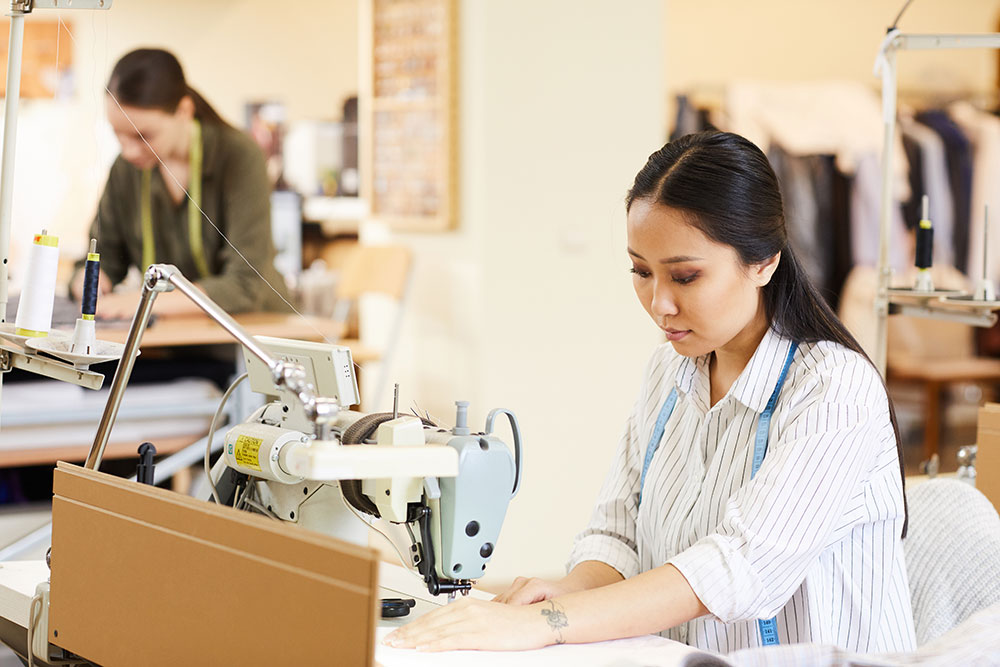
Understanding Garment Construction and Sewing Basics
Garment construction is all about how clothes are actually put together; from sketch to finished piece. It covers everything from pattern making to how sleeves, collars, or zippers are attached. Even if you’re just starting out, knowing the steps behind how a shirt or dress is made can help your designs be more realistic and wearable. Once you understand the structure, it becomes easier to sketch ideas that can actually be produced.
Sewing is one of those core skills that every designer should at least try to learn, even if you don’t plan on doing it all yourself later. It starts with basics like threading a needle or using a sewing machine, then grows into things like adding hems, seams, and fastenings. Hand sewing is great for delicate or detailed work, while machine sewing is faster and more durable. Practicing on scrap fabrics or upcycling old clothes is a fun way to build confidence. And if you’re in London, workshops at places like The New Craft House or Ray Stitch can help you get hands-on with your skills.
Pattern Making and Draping Techniques
Pattern making is basically turning your design sketches into real-life templates for fabric cutting. It’s like the blueprint of your garment; every seam, sleeve, and dart is planned out here. Once you learn the basics, you’ll be able to adjust patterns to fit different sizes and styles, which is super useful if you’re working on a collection. Even just experimenting with basic blocks like a skirt teaches you so much about shape and fit. If you’re in London, places like London College of Fashion offer intro workshops where you can learn hands-on.
Draping is a more freeform way to design, where you pin and shape fabric directly onto a dress form to see how it flows and falls. It’s perfect for testing creative silhouettes or seeing how different fabrics behave in real life. A lot of designers love draping because it feels more intuitive and playful compared to flat pattern work. You can start with simple muslin fabric and slowly build up to more complex shapes. Taking a short draping course or even just experimenting at home can really help boost your design skills and confidence.
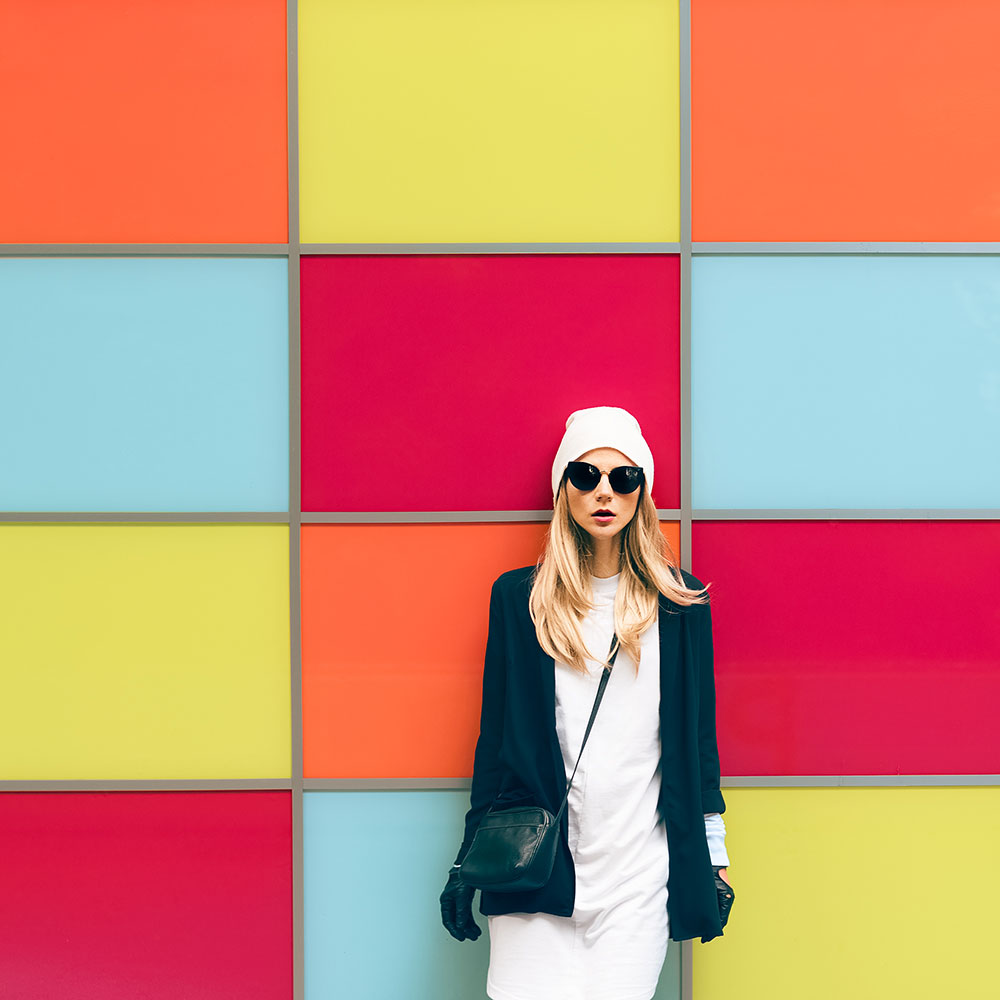
Color Theory and How It Affects Fashion
Color plays a huge role in how your designs are seen and felt. Understanding color theory helps you choose shades that work well together and create the mood you’re aiming for; whether that’s bold and energetic, or soft and romantic. Designers often use the color wheel to explore combos like complementary (opposite colors) or analogous (colors next to each other) for a balanced look. Colors can also send a message like how red often feels powerful, while blue gives off a calm vibe. Playing with color in your sketches or mood boards is a fun way to experiment and build your brand’s visual identity.
Fabric Manipulation and Surface Design
Fabric manipulation is all about changing the texture, shape, or structure of fabric to make it more interesting and unique. Techniques like pleating, gathering, smocking, and quilting can add depth and personality to even the simplest materials. For example, knife pleats can give skirts a crisp, structured flow, while smocking adds a soft, stretchy texture that’s both functional and beautiful. Quilting, like the kind you see in puffer jackets, adds warmth and a sculptural feel.
Surface design, on the other hand, focuses on decorating the outside of the fabric using methods like embroidery, screen printing, beading, or painting. Think of a plain white cotton dress brought to life with hand-painted florals or delicate beaded detailing like you’d see on a bridal gown. These techniques can completely transform a piece, turning basic fabric into something really special. When you combine manipulation and surface design, you unlock endless creative possibilities and that’s where fashion really gets exciting.
The Importance of Fit and Proportion in Clothing
A well-fitted garment really brings out the best in someone’s body shape and makes them feel comfortable, too. Proportion is all about how the different parts of an outfit balance each other, such as the length of a skirt relative to a jacket. It’s crucial for designers to get these aspects right in order to make the outfit stand out from the rest. For example, Zendaya is known for wearing tailored suits that fit her perfectly and play with proportion, like oversized blazers styled with slim-fit trousers, which makes her look effortlessly chic.
If you want to be successful in fashion design, knowing these fundamentals is a must.
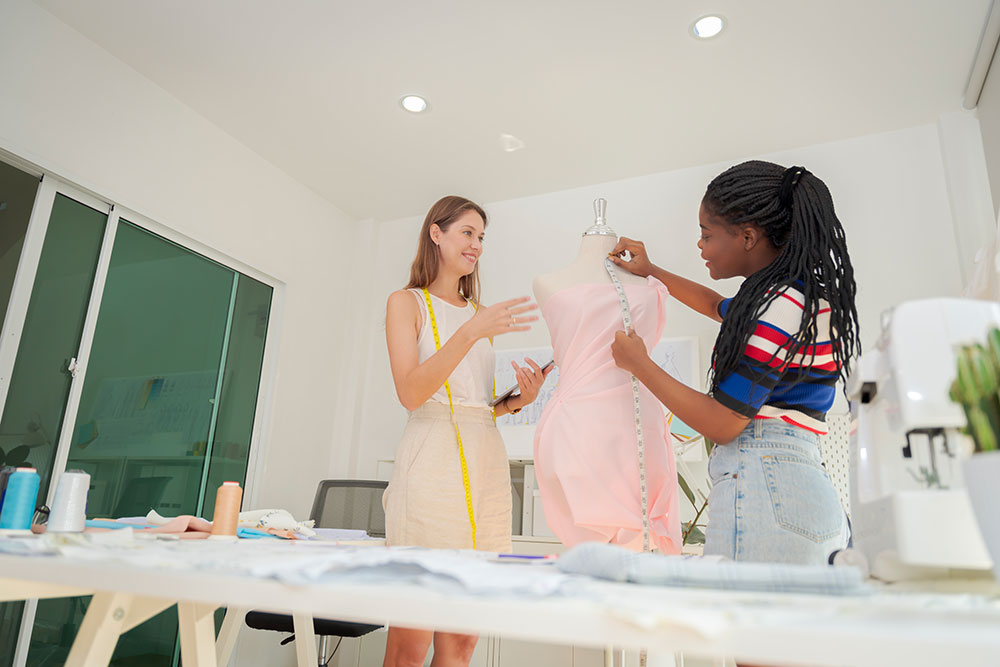
4- Building Essential Skills
In section four, we focus on developing the essential skills that will set you up for success as a fashion designer. Fashion sketching and illustration are key to communicating your design ideas, and you’ll learn how to capture your creative vision on paper or through digital tools. We’ll walk you through the process of bringing your designs to life, whether you’re sketching by hand or using software, and offer tips on improving your drawing techniques.
You’ll also dive into the basics of sewing, starting with hand sewing and machine sewing, both of which are crucial skills for any designer to master. Creating your first basic patterns is another important step; this is where you’ll learn how to translate your sketches into actual garments. Understanding different types of clothing structures, from structured jackets to flowing dresses, will help you make more informed design decisions. Finally, you’ll explore experimenting with upcycling and DIY fashion, a creative and sustainable way to give old garments new life and add a personal touch to your designs. By the end of this section, you’ll have a strong foundation in these essential skills.
Fashion Sketching and Illustration
On the one hand, Fashion sketching is how designers quickly bring their ideas to life. It usually starts with a croquis, a basic figure template, where you can experiment with silhouettes, shapes, and garment ideas. These sketches don’t need to be super detailed as they’re meant to capture the overall vibe of your designs. Whether you use pencil and paper or apps like Procreate, sketching regularly helps you develop your style. Over time, it also sharpens your eye for balance, proportion, and flow.
On the other hand, fashion illustration takes sketching to the next level with more detail, color, and emotion. It’s where you can show off fabric textures, movement, and mood in a more polished way. Illustrations are often used for lookbooks, social media, or pitching ideas to brands. You can use watercolors, markers, or digital tools like Adobe Illustrator. It’s a creative outlet that not only communicates your designs, but also makes them visually unforgettable.
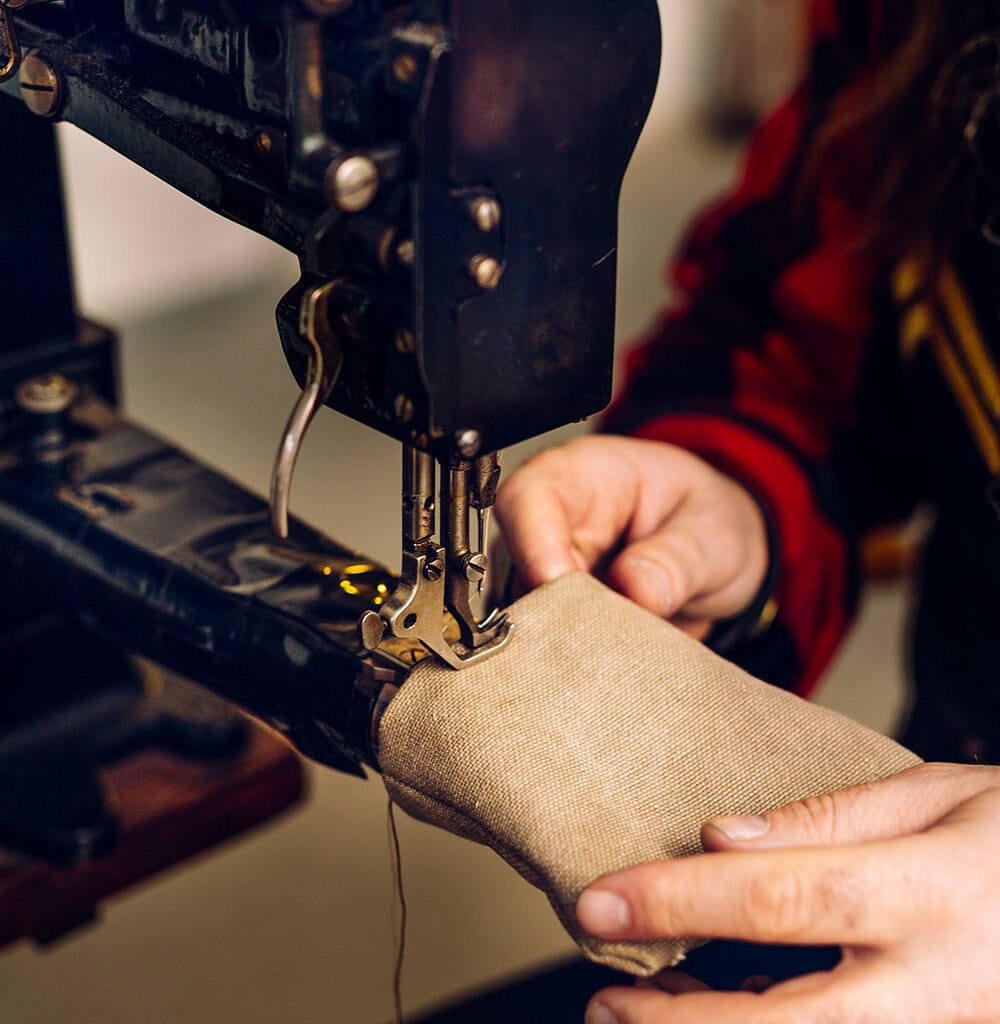
Learning How to Sew (Hand Sewing and Machine Sewing)
Learning how to sew is one of the most useful skills you can have as a fashion designer. Hand sewing teaches patience and precision and it’s perfect for small fixes, adding buttons, or stitching delicate details like hems or linings. Machine sewing, on the other hand, is where the magic really speeds up. Once you get the hang of it, you can start making full garments, experimenting with different stitches, and playing with construction techniques. It might seem intimidating at first (trust me, I’ve broken a few needles!), but with practice, it becomes second nature. Whether you’re mending vintage finds or building your first collection, sewing gives you the freedom to actually bring your designs to life.
Hand Sewing
Hand sewing is a fundamental skill for any fashion designer, especially when it comes to adding personal touches, making repairs, or creating intricate details on garments. This technique is often used for smaller tasks like stitching hems, sewing on buttons, or even finishing seams. Key stitches to learn include the running stitch, which is quick and simple for basic seams, and the backstitch, which is more durable and great for creating strong, lasting seams. While hand sewing is a slower process compared to machine sewing, it allows for greater control over the fabric, resulting in more precise and delicate work. The process encourages patience and enhances your ability to pay close attention to details, making it an invaluable skill for anyone in fashion design. As you practice, hand sewing can also be a creative outlet, allowing you to develop your own techniques and add a unique, personal element to your pieces.
Machine Sewing
Machine sewing is an essential skill for creating professional-quality garments with durable, precise seams. It allows you to work quickly and efficiently, making it possible to produce full pieces like dresses, blouses, or trousers. Starting with simple projects such as tote bags or skirts is a great way to get comfortable with the machine, helping you learn the basic techniques, like threading the machine, adjusting tension, and using different stitch types. As you practice, you’ll develop the confidence and muscle memory needed to move on to more advanced projects. With machine sewing, you’ll be able to make garments that are both strong and clean, perfect for any designer looking to bring their creative ideas to life. If you’re new to machine sewing, consider finding workshops or classes in your area to get hands-on guidance, whether you’re just starting out or looking to refine your skills.
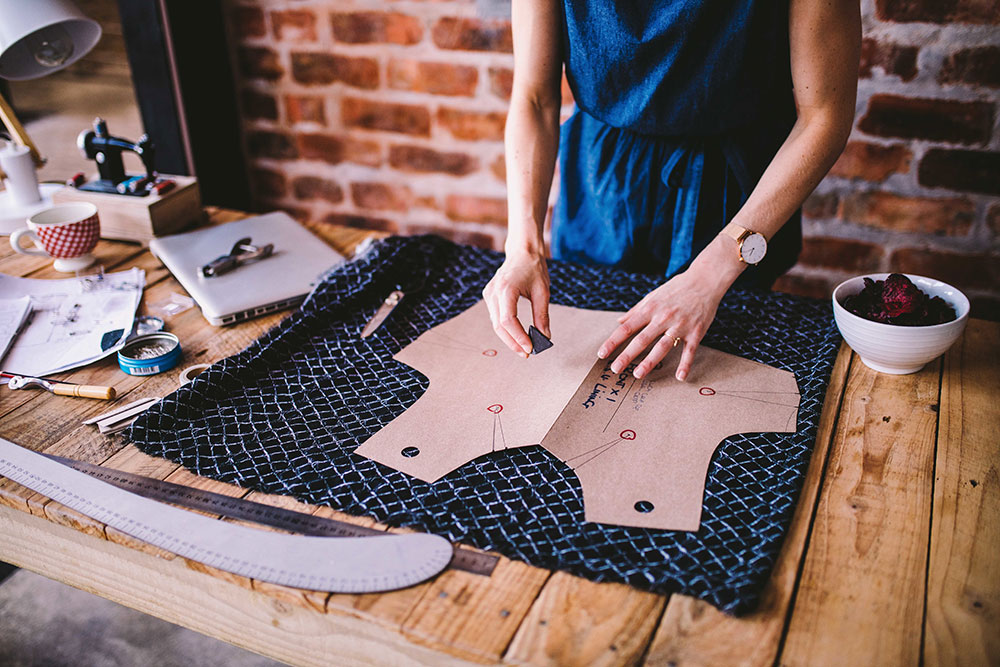
Creating Your First Basic Patterns
Learning how to make basic patterns is a huge step in bringing your designs to life. It all starts with simple shapes like skirts, t-shirts, or trousers as these become your base to build on. You’ll use tools like measuring tape, rulers, and pattern paper to draft shapes that fit real body measurements. Once you know about the basics, you can start experimenting with custom adjustments, like adding pleats or changing necklines. If you’re new to this, YouTube channels like Made to Sew or beginner pattern kits from shops like Sew Over It London can really help you get started.
Understanding Different Types of Clothing Structures
Understanding different types of clothing structures helps you design with purpose. From tailored blazers to flowy dresses, each type of garment has a unique construction that affects how it fits and moves. Structured pieces like jackets often use interfacing and lining to keep their shape, while unstructured garments like kaftans or slip dresses are all about drape and softness. Knowing the difference will help you decide what kind of look and vibe you want for your designs. Try analyzing clothes in your own wardrobe as it’s a great way to learn how different structures are put together.
Experimenting with Upcycling and DIY Fashion
Upcycling and DIY fashion are all about getting creative with what you already have. Instead of throwing out old clothes, you can give them a second life which can be done by cutting, dyeing, painting, or even combining pieces to make something completely new. It’s a fun, budget-friendly way to experiment with design, especially when you’re still learning. Moreover, it’s a sustainable choice that helps reduce waste while showing off your personal style. Whether you’re turning a men’s shirt into a crop top or adding patches to a worn-out jacket, DIY fashion is where you can break the rules and just have fun with it.
Upcycling
Upcycling is a creative and sustainable way to give new life to old clothes, making them fresh and fashionable again. Instead of tossing items you no longer wear, you can turn them into something entirely new, like transforming an old jacket into a statement vest or repurposing fabric scraps into accessories. Not only does upcycling reduce waste, but it also allows you to add a personal touch to your wardrobe, making each piece unique. This trend has gained traction, especially among Gen Z, who share their upcycling projects on platforms like TikTok and Instagram, inspiring others to get creative with their own clothing.
The beauty of upcycling lies in its endless possibilities. With just a few basic sewing skills and some imagination, you can take something outdated and transform it into a trendy, stylish piece. Whether you’re looking to refresh your wardrobe on a budget or reduce your environmental impact, upcycling is a fantastic option. Plus, learning new techniques can be fun and rewarding. For those looking to dive deeper into upcycling, workshops at places like The New Craft House or FOLD offer a hands-on approach to learning these skills in a supportive environment.
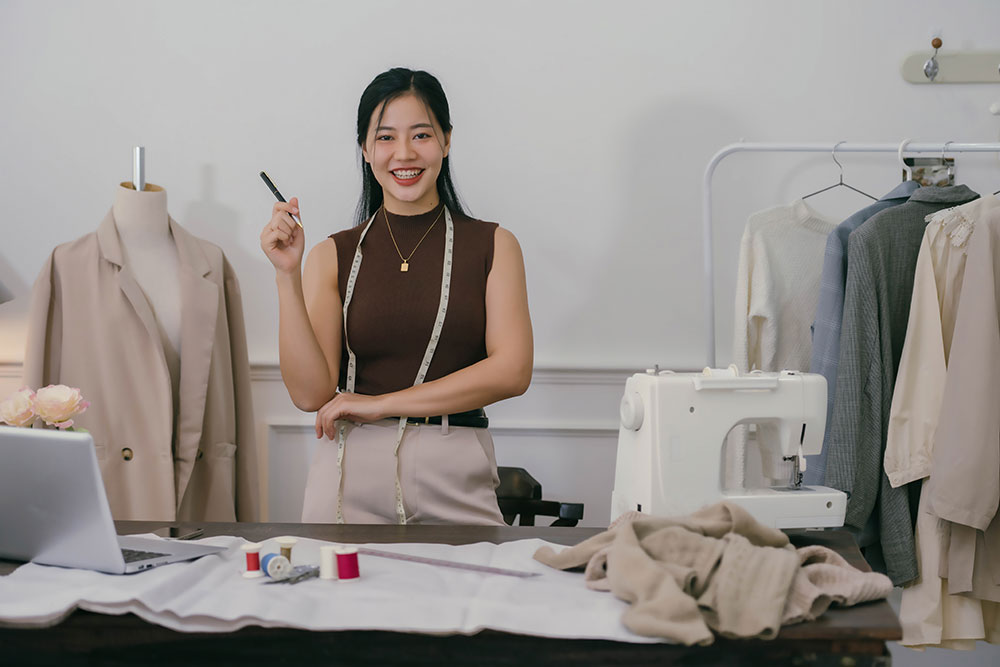
DIY Fashion
DIY fashion is a creative and empowering way to make your wardrobe truly your own. It’s all about using your imagination to create new pieces or customize old ones with unique touches. Whether it’s sewing your own tote bag from leftover fabric or adding personal art to a vintage jacket, DIY fashion allows you to express your style in an affordable and sustainable way. It’s not just about the end result; it’s the process of bringing something to life with your hands that’s so rewarding. Plus, it’s a great way to experiment with design without committing to expensive fabric or professional tools.
With the wealth of resources available on platforms like Pinterest and TikTok, even beginners can dive into DIY fashion with confidence. Creators like @shahirahstyle and @jessyoung offer step-by-step tutorials that make it easy to follow along and try out new techniques. These DIY projects help you build foundational skills like sewing, design, and problem-solving, which are crucial for anyone interested in fashion design. DIY fashion isn’t just a trend; it’s a fun, accessible way to develop your creative skills and get hands-on with fashion.
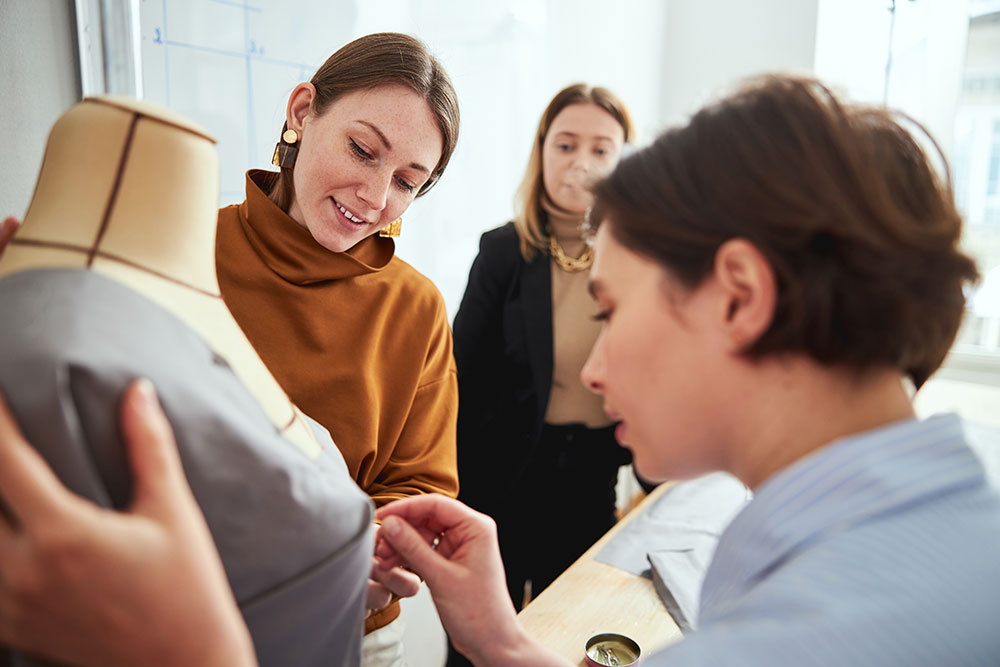
5- Getting the Right Education and Training
In the fifth section, we’ll discuss the importance of getting the right education and training to kick-start your career in fashion design. We’ll begin by exploring whether a formal fashion degree is essential for your success in the industry, highlighting the pros and cons of pursuing a degree versus learning through other avenues. For those considering formal education, we’ll introduce you to top fashion schools and online courses that are great for beginners looking to build a solid foundation in design, techniques, and business practices.
In addition to formal education, you’ll also learn about the benefits of being self-taught and using books, magazines, and online resources to develop your skills. Whether you choose a traditional route or decide to go the self-taught way, both approaches can be equally effective, depending on your learning style and goals. We’ll also discuss the importance of finding a mentor or joining a fashion community to gain valuable insights, feedback, and networking opportunities that can accelerate your growth in the industry. This section will equip you with the knowledge to make informed decisions about how to develop your expertise and build the skills necessary for a successful fashion design career.
Do You Need a Fashion Degree? (Pros and Cons)
It is a big decision to choose whether to pursue a fashion degree or not.
Some people learn best in a classroom setting with structure and feedback, while others prefer learning by doing. There’s no right or wrong path—it really depends on your style, your goals, and your budget.
Here’s a quick breakdown to help you weigh it out
Pros
It is great to have hands-on experience, expert tutors, and projects that actually connect you to the fashion industry. You’ll also meet people such as mentors, classmates, and guest lecturers who could end up being part of your future career network. Moreover, by studying full-time you can stay focused and have a solid foundation in everything from design to business.
Places like Central Saint Martins and London College of Fashion offer exactly that kind of in-depth experience. It is also easier to access internship opportunities through school connections, especially during events like London Fashion Week. Being in a school environment means you’re constantly getting feedback and pushing your creativity. You’ll also get access to studios, equipment, and tech that can be hard to afford on your own. Plus, a degree can help if you’re planning to apply for jobs at big-name fashion houses or brands.
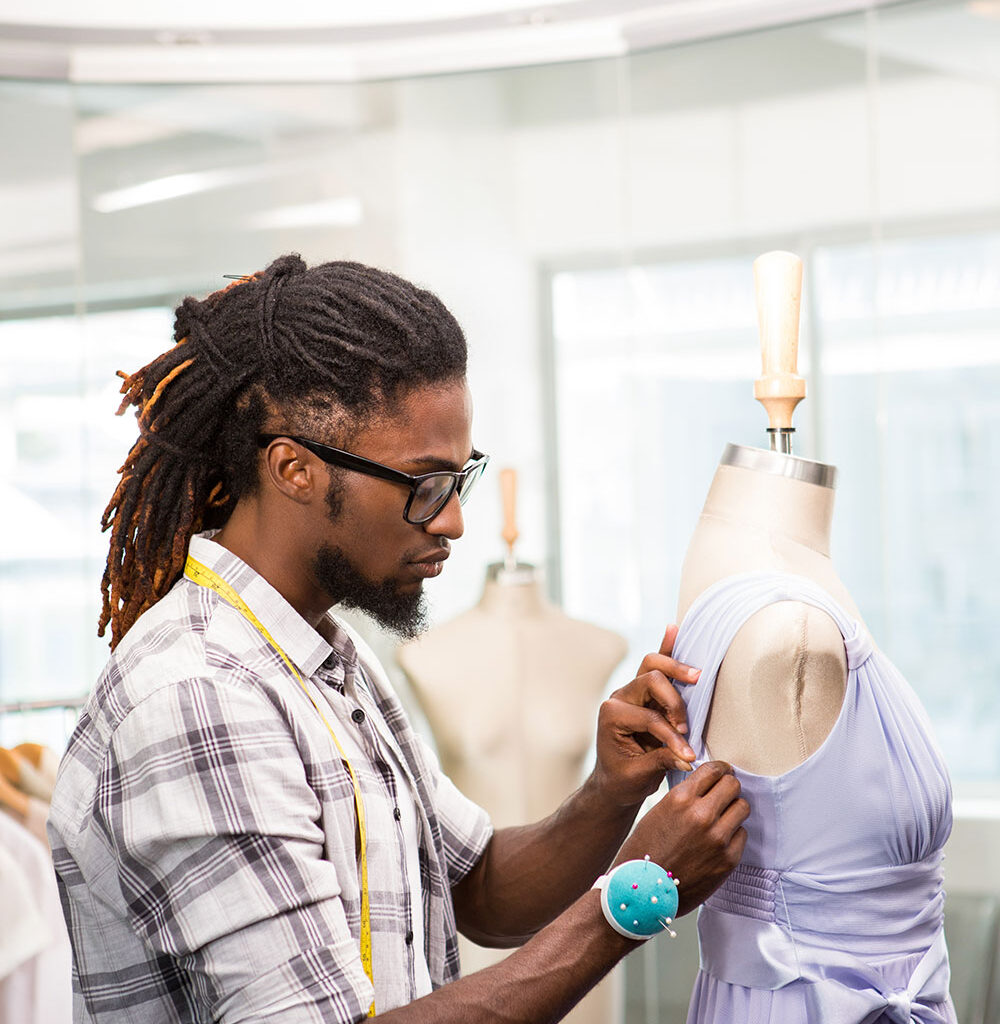
Cons
It is expensive to study fashion, with tuition fees, rent, and materials all adding up fast. A full-time course can be intense and doesn’t always leave time for part-time work or personal projects. Many successful designers didn’t take the university route, they learned through trial, error, and online resources like YouTube. If that’s more your style and you live in London, you could still take short courses or workshops at places like UAL or Ravensbourne University. It is also worth considering that not every course is up to date with the latest tech or trends. Some programs focus more on theory than practical skills, which might not be what you’re looking for. You might also feel creatively restricted if the curriculum doesn’t match your personal style. And honestly, if you’re self-motivated, you can learn a lot from books, online tutorials, and real-world practice for way less money.
Top Fashion Schools and Online Courses for Beginners
If you’re serious about fashion design, studying at a well-known fashion school can give you a solid head start. You’ll get access to expert tutors, hands-on experience, and opportunities to build your portfolio. In London, places like Central Saint Martins, London College of Fashion (UAL), and Ravensbourne University are top picks as they offer short courses, foundation programs, and full degrees depending on where you’re at.
If you’re not in a position to go to university right now then there is no issue. There are amazing online platforms like Coursera, Domestika, Skillshare, and MasterClass where you can learn fashion illustration, sewing, branding, and more. If you’re looking for beginner-friendly courses, check out the fashion design basics by Parsons (The New School) on Coursera or sewing classes by Zoe Edwards on Domestika.
Whether you go to school or learn online, what matters most is staying consistent and always practicing. Fashion is all about doing so just get started wherever you can.

Self-Taught vs. Formal Education in Fashion Design
There’s no one right way to become a fashion designer. Some people go the university route, others totally teach themselves. If you’re someone who thrives with structure, deadlines, and regular feedback, formal education might be your vibe. Schools like UAL or Ravensbourne give you access to professional tools, mentors, and even internships to help kickstart your career.
But if you’re more of a “learn by doing” kind of person, being self-taught can totally work too. A lot of successful designers started with YouTube tutorials, Pinterest boards, and just experimenting with thrifted clothes. You can even build your own mini curriculum by combining free resources, online classes, and sewing practice. At the end of the day, it’s not about the path you take but it’s about how committed and creative you are along the way.
Learning from Books, Magazines, and Online Resources
If you’re just starting out in fashion so the books, magazines, and online content can be total game-changers. Fashion books like Fashionpedia or The Fashion Designer’s Textile Directory break down complex stuff into easy visuals and explanations. Magazines like Vogue, Dazed, or i-D (especially the UK editions!) are amazing for spotting trends, learning about designers, and getting inspired by editorials.
Online, YouTube is packed with sewing tutorials, portfolio tips, and even interviews with top designers; plus it’s totally free. Fashion platforms like Business of Fashion also offer student-friendly content if you want to dive deeper into the industry side. The best part? You can learn at your own pace, anytime, anywhere.
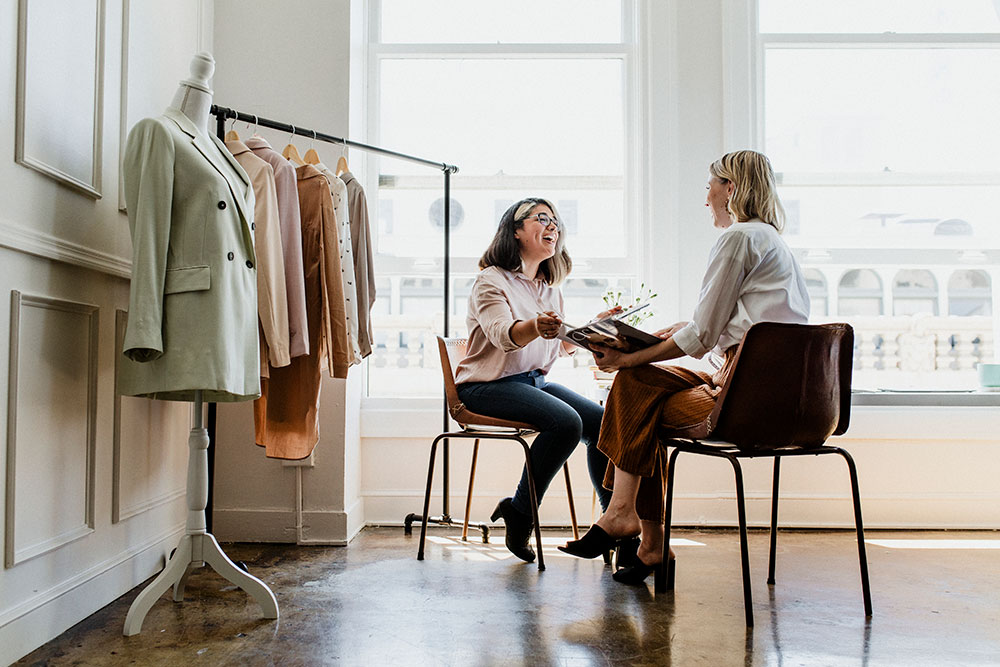
Finding a Mentor or Joining a Fashion Community
On one hand, having a mentor in fashion can honestly change everything. They’ve usually been through what you’re going through, so their advice is super real and practical. A mentor can help you refine your portfolio, give you feedback on your designs, and even connect you to opportunities you didn’t know existed. It’s also comforting to have someone who believes in your potential and pushes you to grow. You can find mentors through internships, university programs, or even reaching out to designers you admire on LinkedIn or Instagram.
On the other hand, being part of a fashion community helps you feel less alone, especially when you’re just starting out. It’s a space where you can share your work, get honest feedback, and learn from others at different stages of their journey. Online spaces like Discord servers, Instagram fashion collectives, and even TikTok threads are great places to start. If you’re in London, there are events, pop-ups, and meetups where creatives gather and support each other. Surrounding yourself with like-minded people keeps you inspired, accountable, and motivated to keep growing.
Continue Reading
- How to Get Started in Fashion Design- A Beginner’s Guide / Part 1
- How to Get Started in Fashion Design- A Beginner’s Guide / Part 2
- How to Get Started in Fashion Design- A Beginner’s Guide / Part 3
- How to Get Started in Fashion Design- A Beginner’s Guide / Part 4
Written By: Muskaan Khojestagan
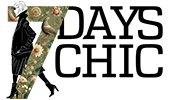
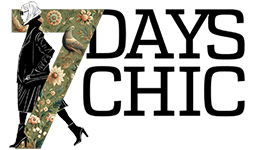
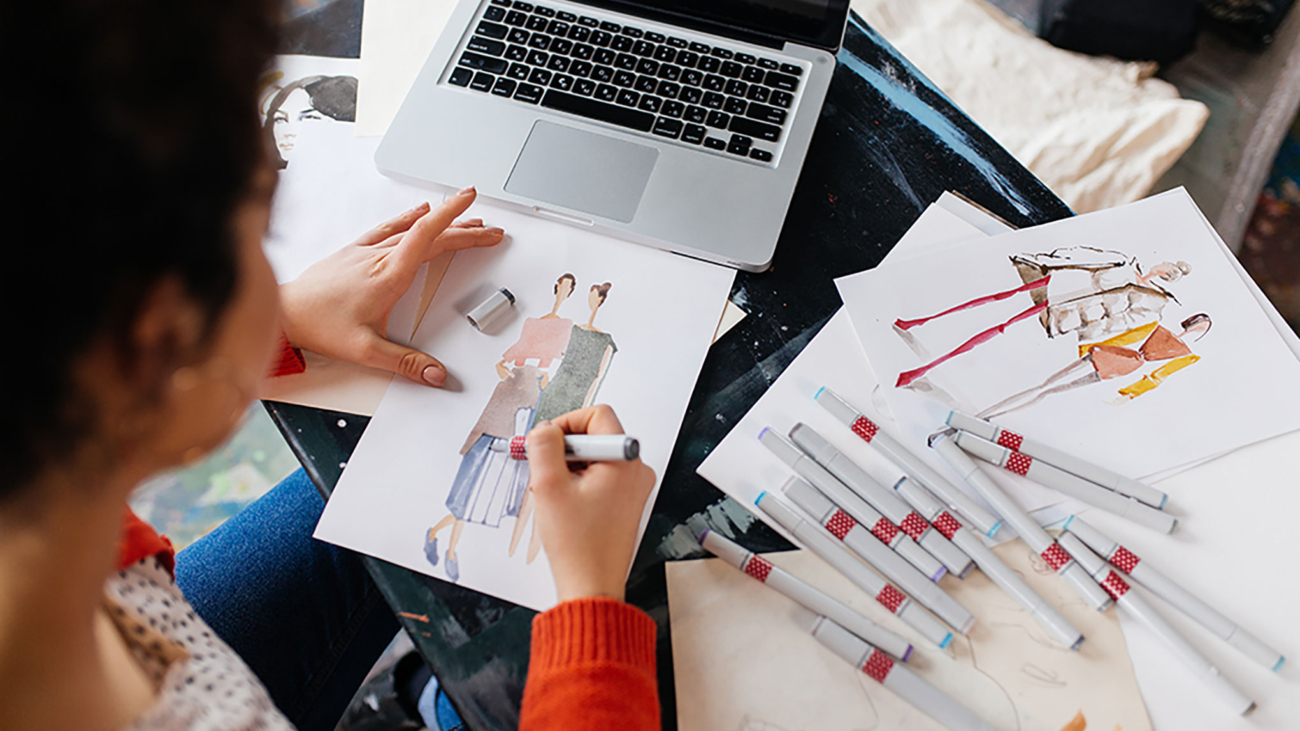
Add a Comment